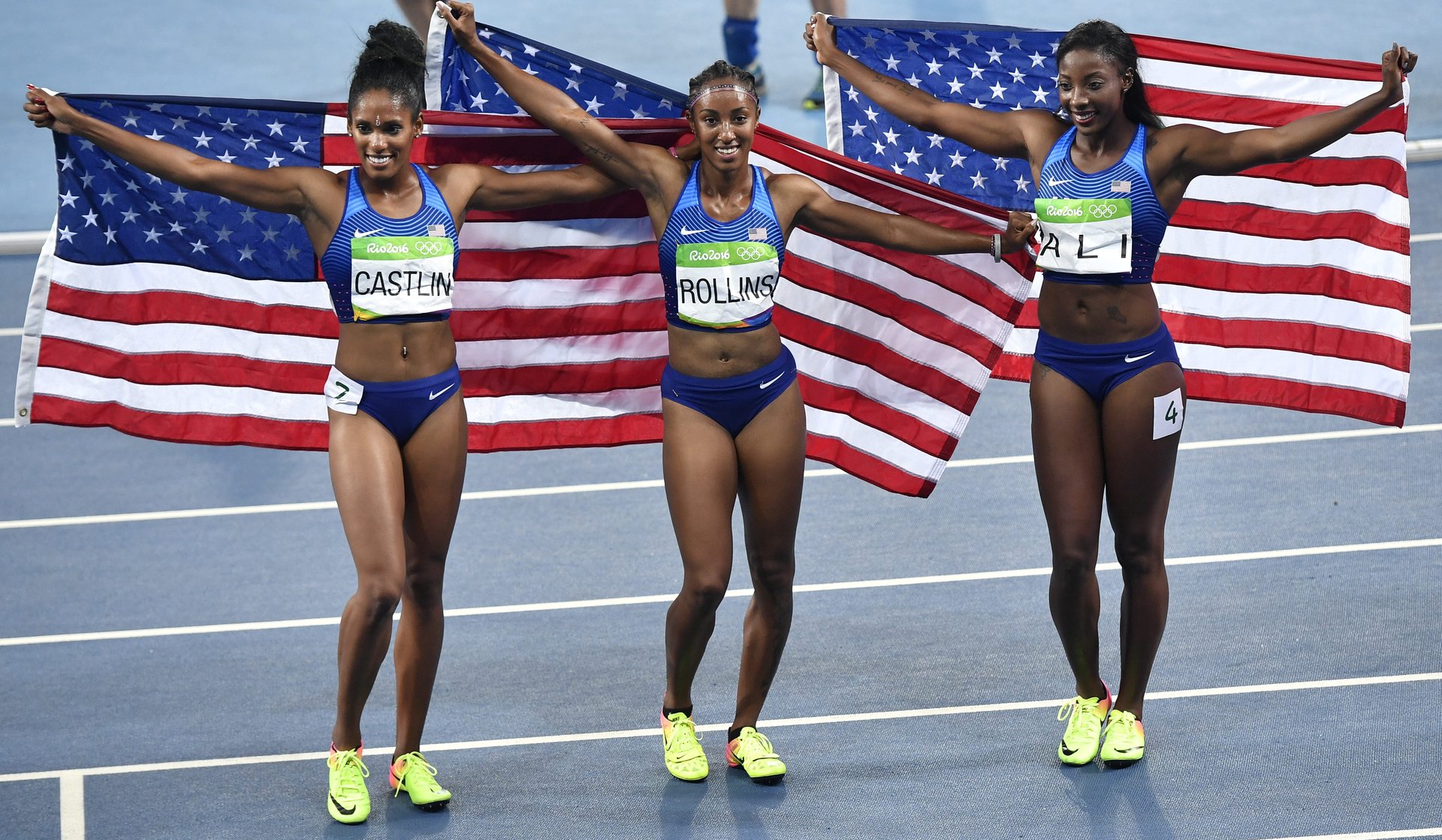The Olympics’ antiquated rules prevent us from seeing who the world’s best really are
What’s the point of the Olympics?


What’s the point of the Olympics?
Is it to bring together the youth of the world in friendly competition? Or is it a contest among the planet’s greatest athletes?
It’s increasingly clear that it’s intended to be the latter, a process that started with the ending of the sham of amateurism (Olympic basketball: welcoming NBA players since 1992) and has taken on speed with the re-introduction of sports like soccer, golf, and tennis. The IOC wants the best of the best, playing on the biggest stage.
But if we want a true tournament of the world’s greatest, it’s time to end the outdated restriction on how many athletes a nation can field in each event.
The Rio games have yielded many illustrations of the absurdity of the cap. One of the clearest? The women’s 100 meter hurdles. The US swept the top three places, yet left Kendra Harrison—who set the world record on July 22—at home because she didn’t finish in the top three at the trials. Might she have cracked the top three on the Olympic stage in Rio? We’ll never know.
Harrison didn’t apply for citizenship in Qatar or Bahrain, but that’s increasingly an option for athletes shut out of their national teams. While some are bolting due to legitimate grievances with their country’s federations, a growing number are looking for other flags to compete under. The Bahraini track team featured natives of Jamaica, Kenya, and Ethiopia. Qatar’s 14-man handball team features athletes from nine countries, and 21 countries are fielding table-tennis players players born in China.
For cash-rich nations with small populations and little sports tradition, it’s easy to understand the appeal of importing athletes for the Olympics. But even the US succumbs to the same temptation: Thanks to the US Army’s world-class athletes program, which speeds citizenship, two of the three men on the American 10,000-meter squad were born in Kenya.
For sports in which competing in the Olympics is the pinnacle, and a clear path to economic security, it’s hard to to blame the athletes for these creative workarounds. Like water finding a path to the sea, world-class competitors will find a way to compete. Yet it’s an unsatisfying solution, one that threatens the idea of nationhood that’s at the core of the Olympics.
The simplest way to stem the flow of athletes to other countries is to remove the caps and let nations field as many athletes that can meet the qualifying standards. Let six hurdlers race for the US, and let 10 Ethiopians enter the marathon. The US could probably field competitive “B” teams in men’s and women’s basketball. Why not let them, if they can make it through the qualifying tournament? (There are already multiple national teams in beach volleyball, anyway.)
Emphasizing quality over diversity would come at a cost. Lesser athletes would be squeezed out, and we could lose novelty acts like Eddie “the Eagle” Edwards, the hapless British ski jumper, and Eric Moussambani, a swimmer from Equatorial Guinea who appeared close to drowning in the Sydney Olympic pool. We’d lose some of the color and charm that makes the Games so compelling. And without a clear path to the Olympics, some countries might abandon their support of sports where they’re not competitive.
But the Olympics altered its fate from the minute it chose to move past the amateur era and let the professionals in. Now it’s in a transition phase. It’s not yet arrived at a true contest of the world’s best, but the momentum is moving us toward a sporting world of porous boundaries and negotiated citizenship. If the idea of a competition among nations is still worth preserving, there’s one easy fix: Let the best compete for their country.